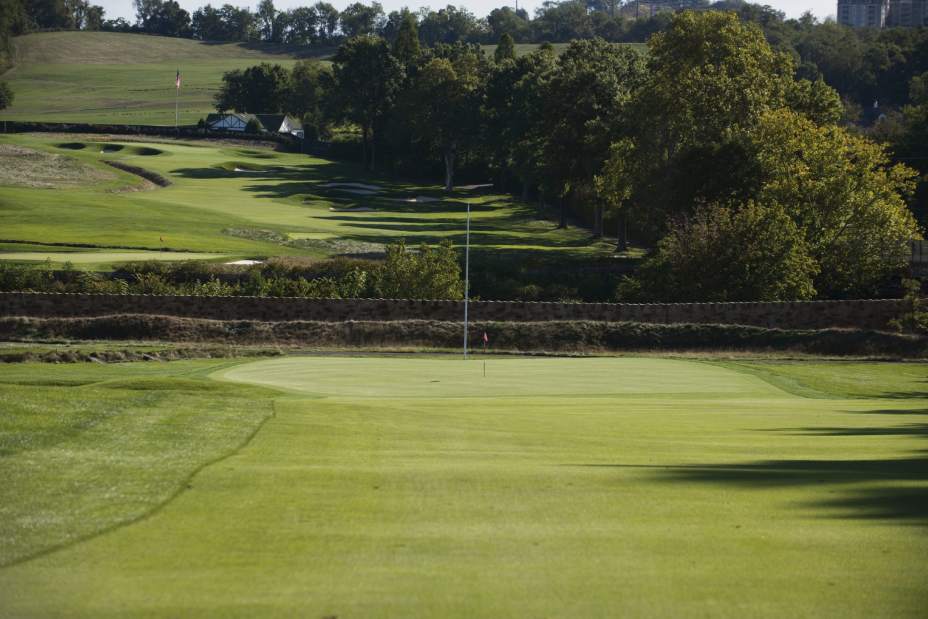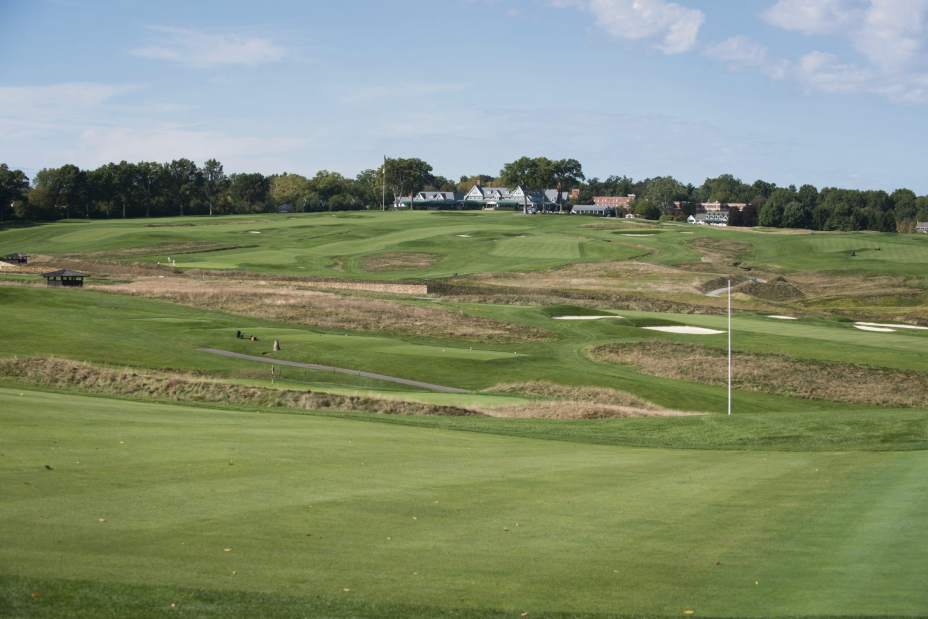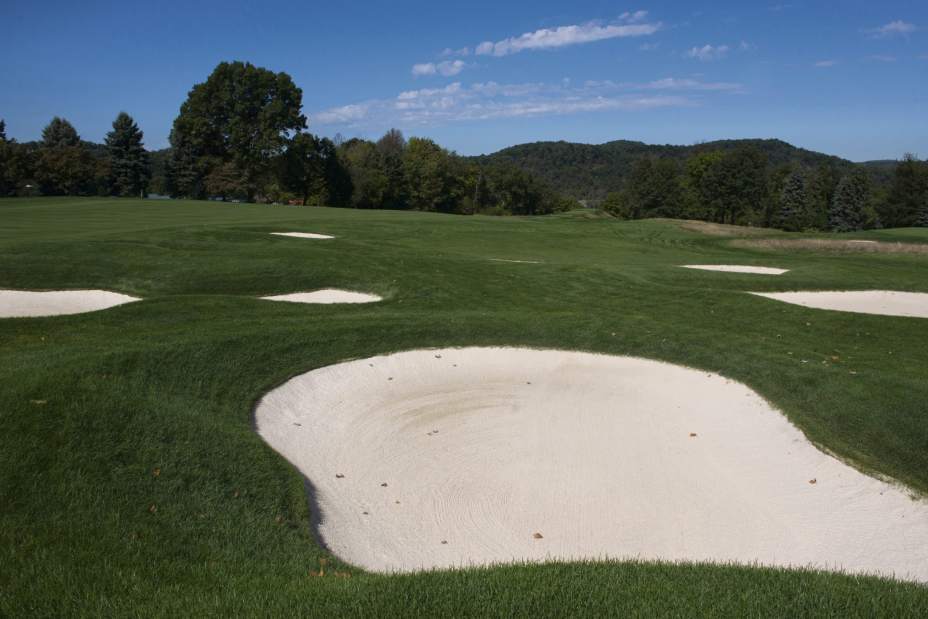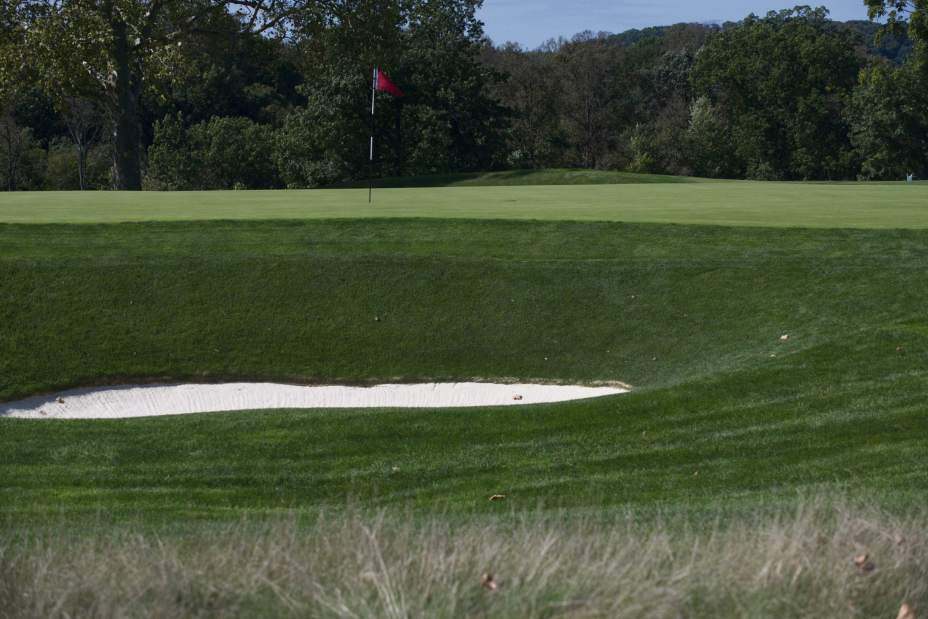Several challenging holes could decide championship
No. 1, par-4
If you ask Aaron Baddeley, the opening hole at Oakmont Country Club sets the tone for the round. One bad shot, one bad decision can derail any shot at a championship.
Baddeley began the fourth round of the 2007 U.S. Open with a triple-bogey, then watched his 54-hole lead slip away before he reached the third tee.
Baddeley coupled an errant tee shot with a strategic gaffe. Instead of minimizing the damage, he dared to be a hero.
Still, a hero shot might be required to conquer this challenging par-4, mostly because players are likely to have an awkward approach shot with little margin for error. The short hitters, in particularly, might have a blind shot to a wickedly fast green that will be difficult to two-putt if they get out of position, especially in the back rough with back-pin placement.
“More often than not, you have to take your medicine. If you try to get too greedy or push the envelope, thinking you have enough room, all of a sudden you bring six (double-bogey) into play, especially on No. 1,” the USGA's Jeff Hall said.
No. 3, par-4
Tiger Woods knows the perils of getting out of position on this challenging par-4. The fairway is accessable with a 3-wood or iron. The church pews may not be as penal. But if an approach shot comes up short or is slightly long, a stroke likely is sacrificed.
“That third hole surprised us about how difficult it played in 2007 compared to past tournaments here,” course superintendent John Zimmers said. “When you look at it, you get caught up in the aesthetics and the pews, but it's really about the discipline of the first shot.
“They want a particular shot, so they have to hit the ball in a rather high elevation. It's one of the few places where you have to carry the ball and land it correctly. If you don't, it'll run away from you. That, of course, is how the scores add up real quick.”
If a player finds the rough, a sand wedge is the sensible option because there's little chance of getting an approach shot onto the green.
“Chances are you can get a flyer out of the rough,” Zimmers said. “There is tightly mowed grass behind the No. 3 green and not enough room to play a shot. The players will have many options out of the rough around the greens. You can play the shot with a putter, 7-iron or 3-wood to chase it up the hill.”
No. 10, par-4
It's all about discipline when you make the turn at Oakmont. No one will play target golf here. Almost every approach shot (unless it rains heavily) will be chased up to the putting surface.
The hole, when cut to the right, becomes one of the most difficult shots in all four major championships, especially when the green is firm. A par here in the final round will feel much like a birdie, especially for those atop the leaderboard.
The strategy is to play it safe off the tee, but there are no assurances that many in the field won't be hitting sideways out of the treacherous bunkers or the 5-inch primary rough, partly because of the slope of the fairway.
Getting to the green isn't the problem, but keeping the ball on the correct quadrant will be a challenge. You have to hit a great fairway shot. If the ball lands in the rough, it will leave you with a serious problem.
People enjoy watching the greatest players in the world putting the ball onto the 10th green. There is so much left-to-right, the hole — when cut to the right — becomes one of the more difficult shots in all four major championships, especially when the green is firm.
No. 12, par-5
This isn't your average par-5. Only a few players will dial it back and use a 3-wood instead a driver.
The championship contenders will have to avoid ditches on both sides of the fairways and the bunkers that align the steeply sloped fairways. You can hit great shots, but the green is severely sloped from back to front, which is one of the more overlooked aspects of the hole.
The course design is unlike most courses, which are set to slope front to back where the balls feed down. You can expect the greenside bunkers to gather up a lot of bad shots, and good ones, too.
There are escape routes for errant shots, especially along the right side of the fairway. The players can move the ball forward out of some bunkers, and the greenside bunkers afford opportunities to salvage birdie. But too many loose shots here could result in a double-bogey — or worse.
No. 17, par-4
If you have a one-shot lead coming to the tee, you have to decide whether to play it safe or try to deliver the knockout blow by driving the green. If you're a shot or two behind, then there's not much to think about.
Unless someone runs away with the championship, expect this short, risk-reward hole to play a major role in the outcome.
“The fairway bunkers at Oakmont — it's the unusual case if you're able to play it to the green,” USGA's Jeff Hall said. “I would argue the church pews are more in play on the fourth hole. The players are hitting a shorter club to get into the fairway. They are playing away from the bunkers around the corner. They are looking left off the tee, hoping for the ball to drift right.”
Even though the hole covers only 313 yards, it will take a remarkable shot to keep the ball on the green. Some players discovered it's easier to hold the green coming out of the greenside bunker, which could take an unwanted big number out of play.





